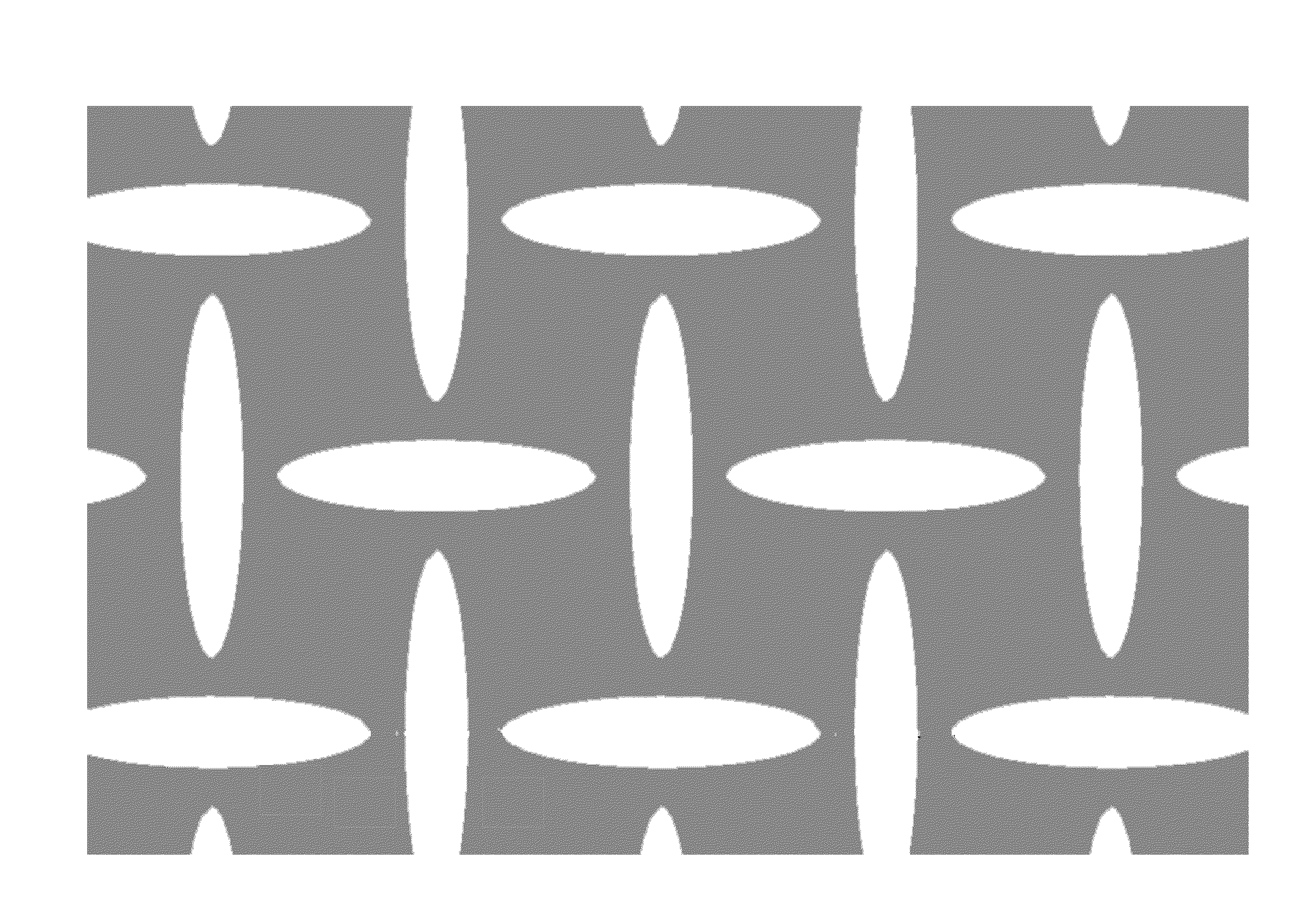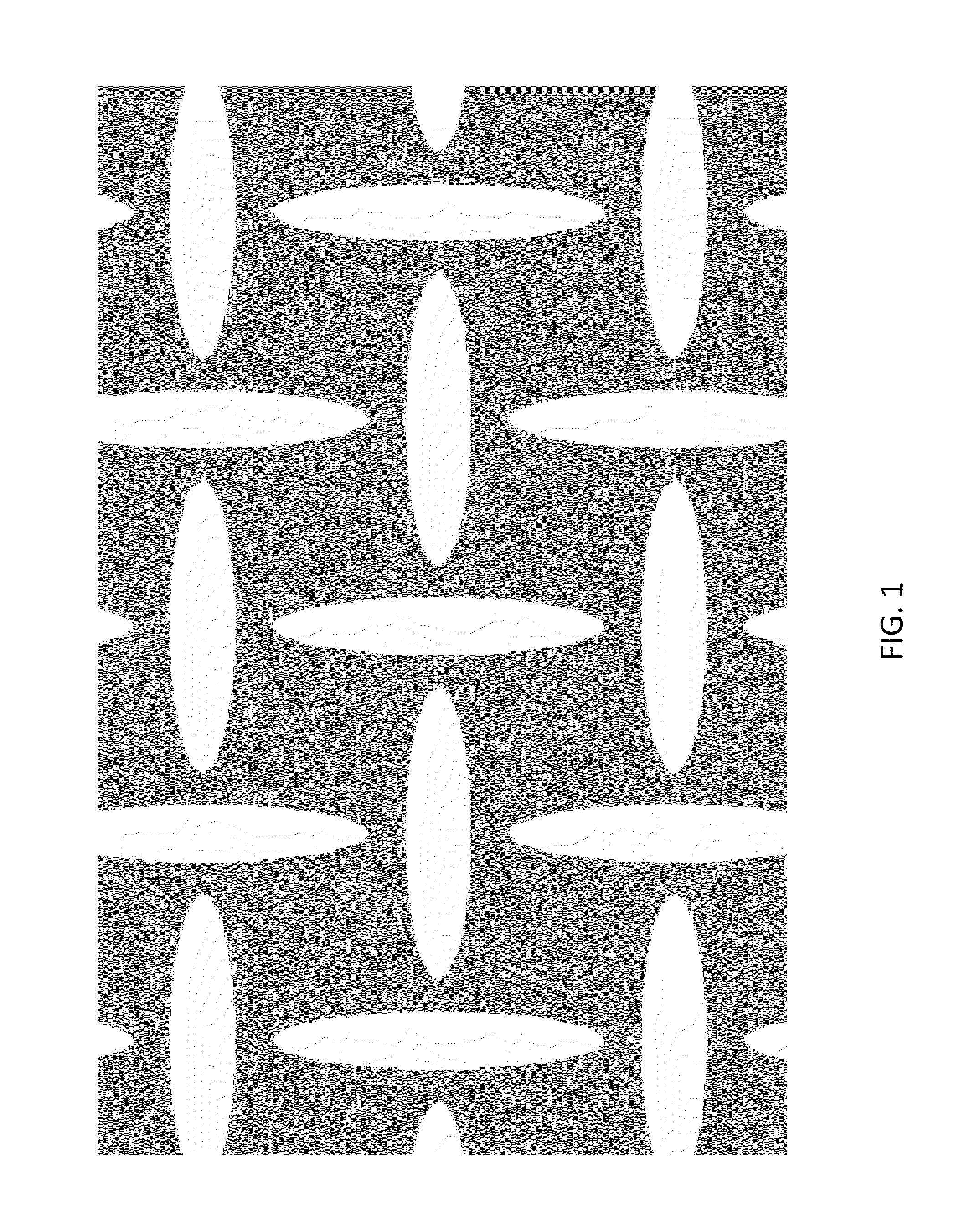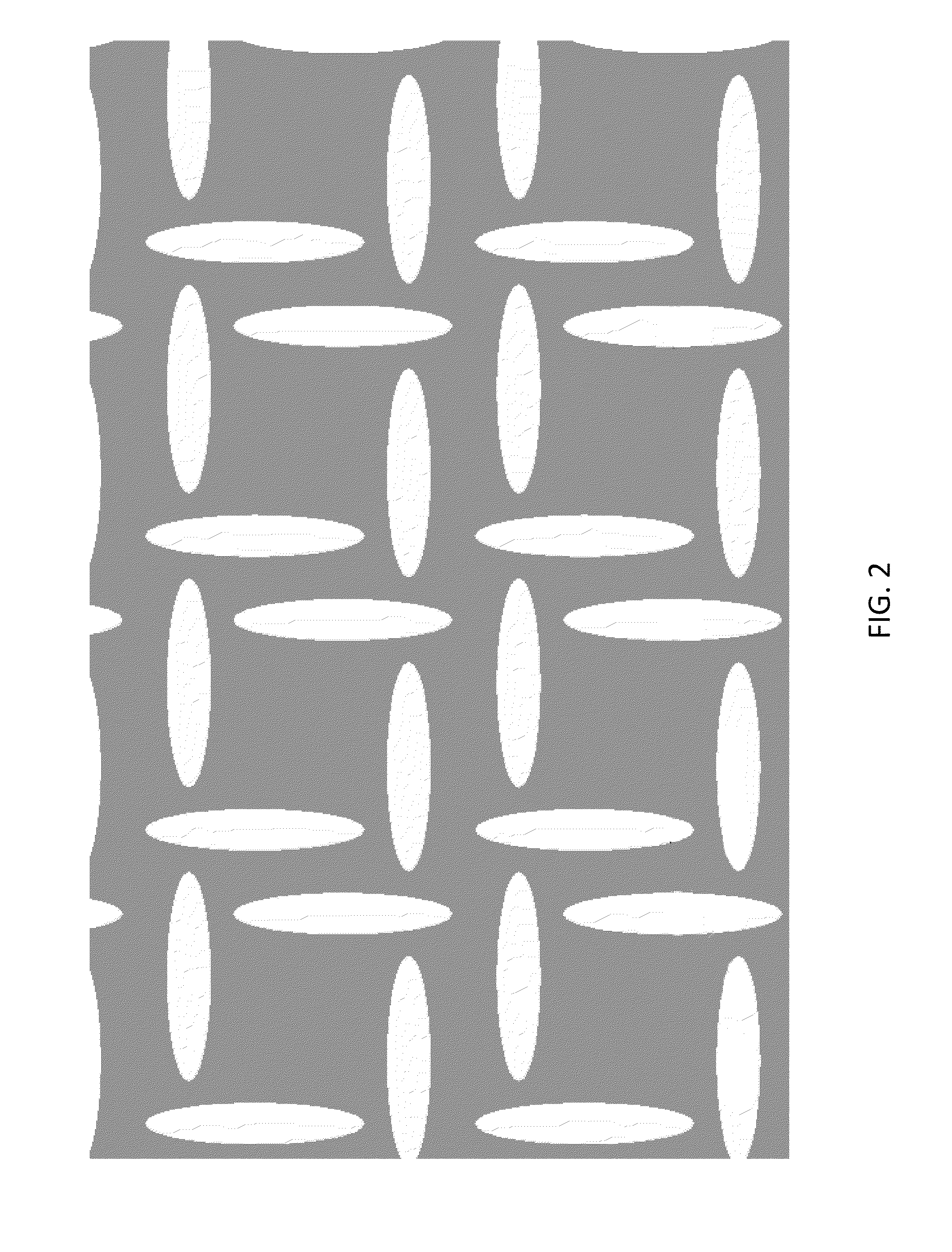Structured materials with tailored isotropic and anisotropic poisson's ratios including negative and zero poisson's ratios
a technology of anisotropic and isotropic proportions, applied in the direction of thin material processing, layered products, transportation and packaging, etc., can solve the problems of inconvenient use of such processes, cost-prohibitive to large-scale manufacturing, and limited application in engineering applications
- Summary
- Abstract
- Description
- Claims
- Application Information
AI Technical Summary
Benefits of technology
Problems solved by technology
Method used
Image
Examples
Embodiment Construction
[0022]The invention provides a structured material, providing isotropic or anisotropic Poisson's ratios including zero or even a negative Poisson's ratio. The structured material includes a strain-permitting matrix material and a patterned porous conformation that allows the control of the Poisson's ratio of the structured material. The resulting Poisson's ratio is controlled at small strain (strains less than 1%) and may also be robust to larger strain (strains up to and greater than 10%). The material is patterned with a repeating pattern of voids, which can be cut, molded, printed, or otherwise imparted into the material (2-D sheets or 3-D solids). The material can be polymeric (including, but not limited to, unfilled or filled vulcanized rubber, natural or synthetic rubber, crosslinked elastomer, thermoplastic vulcanizate, thermoplastic elastomer, block copolymer, segmented copolymer, crosslinked polymer, thermoplastic polymer, filled or unfilled polymer, or epoxy) but may also ...
PUM
| Property | Measurement | Unit |
|---|---|---|
| Poisson's ratio | aaaaa | aaaaa |
| Poisson's ratios | aaaaa | aaaaa |
| Poisson's ratio | aaaaa | aaaaa |
Abstract
Description
Claims
Application Information
 Login to View More
Login to View More - R&D
- Intellectual Property
- Life Sciences
- Materials
- Tech Scout
- Unparalleled Data Quality
- Higher Quality Content
- 60% Fewer Hallucinations
Browse by: Latest US Patents, China's latest patents, Technical Efficacy Thesaurus, Application Domain, Technology Topic, Popular Technical Reports.
© 2025 PatSnap. All rights reserved.Legal|Privacy policy|Modern Slavery Act Transparency Statement|Sitemap|About US| Contact US: help@patsnap.com



